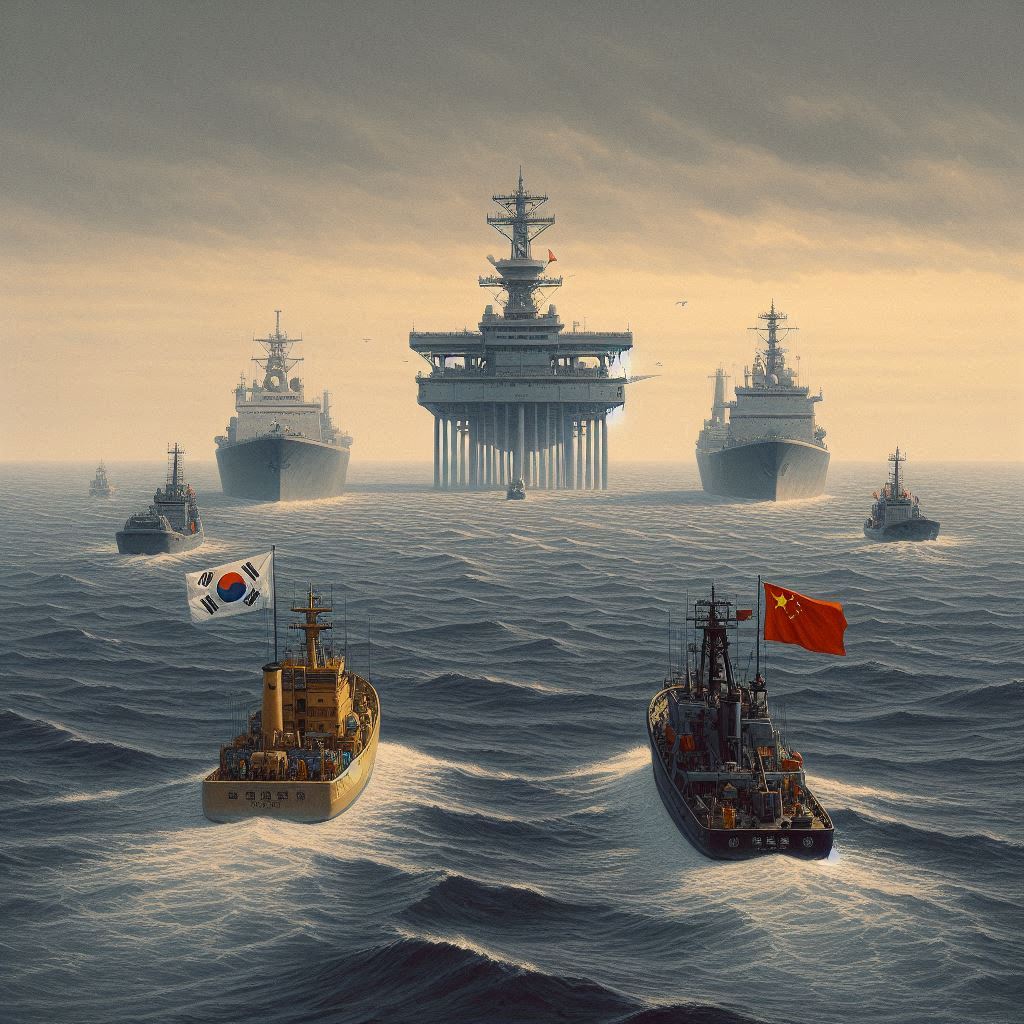South Korea has recently shown deep concern about a structure that China built in a part of the sea where both countries have overlapping claims.
Chinese Sea Structure Sparks Worry in Seoul
This structure is located in the Yellow Sea, which is called the West Sea in South Korea. The area is part of what’s known as a Provisional Maritime Zone, where the exclusive economic zones (EEZs) of both countries overlap.
The South Korean government raised this issue during a maritime meeting between the two countries, which took place in Seoul. During this dialogue, South Korea officially told China that it was worried about the construction. The concern is not just about the structure itself but also about what it might mean. South Korean officials worry that the move could be an attempt by China to claim rights over the disputed waters.
On the other hand, the Chinese representatives explained that the structure is simply a fish-farming facility. They made it clear that it has nothing to do with territorial claims. They insisted that the construction was legal under both Chinese and international law and does not break any agreements between China and South Korea related to fishing or sea boundaries.
Despite China’s explanation, South Korea remains cautious. The location of the structure is very sensitive because both countries have agreed that this overlapping sea area needs special handling. It’s not officially divided between them, so any activity there can be seen as risky or provocative.
Countries Aim to Avoid Escalation
Both China and South Korea agreed that they should keep talking about the issue and try not to let it affect their overall relationship. According to statements from both governments, they understand that this matter needs to be managed carefully and without making things worse.
Officials from the foreign ministries of both countries attended the recent meeting. The talks were part of a regular dialogue between the two sides to discuss maritime issues. The two countries said they would keep using diplomatic channels to deal with any disagreements and find ways to avoid tension in the West Sea.
South Korea stated that it will look into possible responses, including what it called “proportional countermeasures”. This means that the country is considering actions that would match what it believes China has done. However, no specific actions were announced at this time.
Both sides stressed that they want to handle things peacefully. They also talked about ways to improve cooperation in the sea, such as sharing more information and working together more closely on practical matters like fishing, environment protection, and maritime safety.
Maritime Zone Continues to Be a Sensitive Spot
The part of the Yellow Sea where the structure was built has been a sensitive issue for a long time. Because the area is not clearly marked as belonging to either China or South Korea, both sides have to be careful about what they do there. That’s why the sudden appearance of a new sea structure made the South Korean government so uneasy.
In past years, both countries have tried to manage their differences through regular meetings and joint agreements. They have created rules to handle fishing and other activities in the disputed waters. But even small changes, like building a new structure, can cause misunderstanding and raise questions about who controls what in the sea.
Even though China insists the structure is only for fish farming, the fact that it was placed in a contested area has triggered concern in South Korea. The government sees any construction in that zone as something that must be clearly discussed and agreed upon by both sides beforehand.
To avoid further problems, both governments have agreed to talk more often. They said they will discuss how to manage the sea area fairly and peacefully. Officials also mentioned the importance of avoiding actions that could lead to tension or send the wrong message.
So far, no physical confrontation has taken place, and both China and South Korea seem to want to keep the situation calm. But the disagreement shows how fragile things can be in shared or disputed areas. Even when countries try to cooperate, unexpected moves can lead to fresh disputes.
The next steps will likely involve more meetings and discussions to make sure that both sides understand each other’s actions. For now, the focus remains on managing the issue carefully and maintaining open lines of communication.

